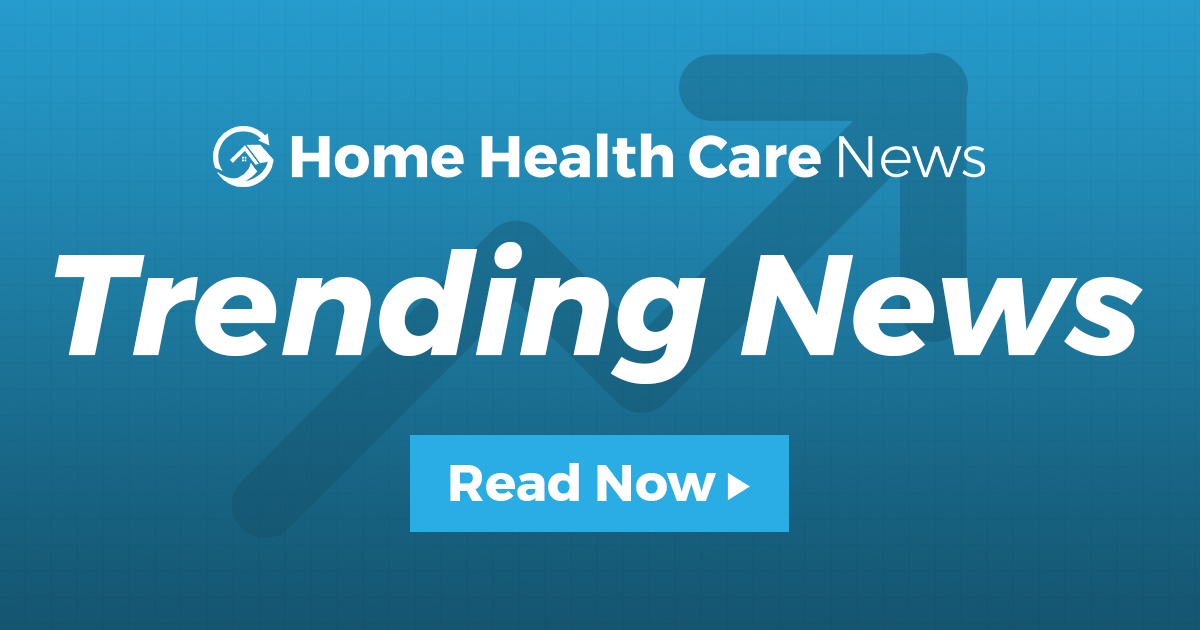Voices: Carter Bakkum, Senior Consultant, Data & Analytics, Trella Health

This article is sponsored by Trella Health. In this Voices interview, Home Health Care News sits down with Carter Bakkum, Senior Consultant, Data & Analytics, Trella Health, to talk about the latest home health care industry trends and data-driven strategies for the year ahead, and how they’re shaping the post-acute care landscape. A trusted advisor to national clients, Carter leverages data to guide strategic decisions, support advocacy, and author Trella’s sought-after Industry Trend Report. With experience as a speaker at key industry events, he brings invaluable insights on pressing topics like admissions, utilization, Medicare Advantage enrollment, and access to care. This conversation spotlights emerging data-driven trends critical for organizations preparing for the challenges and opportunities ahead.
Home Health Care News: What life and career experiences do you most draw from, in your role today?
Carter Bakkum: My approach to my role today is shaped not by a single pivotal moment, but by the cumulative impact of countless day-to-day experiences over the course of my career. Each small problem I’ve tackled, and each analysis I’ve conducted, has added a layer of insight that informs how I approach the challenges my customers face. Over the past seven years, I’ve consistently worked with claims data in various capacities. This steady accumulation of knowledge and context—built one analysis or data investigation at a time—has been invaluable in helping me address complex problems with thoughtful, tailored solutions.
One of the most unique aspects of the healthcare industry is the accessibility and granularity of claims data, which provides rare visibility into market share and broader trends. I feel fortunate to work in a space where I can channel my curiosity into meaningful answers that directly address customer needs. Whether it’s understanding market dynamics or solving specific business challenges, the ability to connect data insights to actionable strategies is a privilege I deeply value. It’s this combination of curiosity, experience, and incremental learning that guides my work today.
As a Senior Consultant focusing on data and analytics, how do you guide organizations through interpreting data from Trella Health to make strategic growth decisions?
The most interesting aspect of my role is how varied organizations’ strategies are and how that variance impacts the interpretation of Trella Health’s data. I first need to understand the core question the organization wants to answer and what aspects can be quantitatively measured with our data. Then, I translate qualitative growth strategies into a customized index for market evaluation. These indices integrate data from a variety of sources and focus on several landscapes: Medicare (FFS and MA), post-acute care utilization, referral sources and competitive environments. The index is weighted based on the organization’s individual approach to growth.
Agencies that are confident in their ability to demonstrate the value of post-acute care to generate new referrals from facilities are given higher weight in markets with low utilization. Agencies adept at breaking into closed health care networks through joint ventures will have higher weights in markets with referral source networks. Agencies skilled at providing exceptionally high quality will have a higher weight in markets where, despite a competitive landscape, their core value proposition adds value.
My approach is highly individualized and focuses on creating a method for scalable comparative market evaluation that simplifies quantitative data. Overall, I help customers investigate opportunities for growth.
What are the most significant trends in post-acute care this year, and how are they shaping the industry landscape?
Based on FFS claims data, the industry appears relatively stable this year compared to the significant movements during and after the pandemic. For example, the percentage of FFS inpatient discharges with a home health disposition increased from 21.1% during the 2019 Q2 – 2020 Q1 timeframe to 24.7% during the 2020 Q2 – 2021 Q1 timeframe, but it has since returned to 22.5% for the 2023 Q2 – 2024 Q1 timeframe. Similarly, the percentage of Medicare mortalities on hospice at the time of death rose from 44.7% during the 2020 Q2 – 2021 Q1 timeframe to 50.1% for the 2023 Q2 – 2024 Q1 timeframe, which is closely aligned with pre-pandemic averages.
However, this year’s regulatory and payor environment trends largely continue those established before 2020. The ongoing increase in Medicare Advantage plan enrollment, coupled with decreases in Traditional Medicare enrollment and FFS reimbursement cuts to home health agencies, has created substantial pressure on the skilled home health industry. These challenges are compounded by competitive staffing environments and tough contract negotiations with private payors.
At a local level, how can agencies use industry trends data to guide and benchmark their performance? Specifically, what metrics should they be looking at, and what are some use cases that can help bring clarity to their business?
Every market is unique, but quantitative baselines can help agencies identify specific pain points in their markets and adjust their strategies in real-time. Significant deviations from national averages might signal providers to change their approach and reevaluate their targets, but the metrics they investigate will depend on the organization’s strategy.
For example, a home health agency looking to drive admissions through new referral sources can target hospitals with a lower rate of home health discharge instructions compared to the national average of 22.5%. Hospice agencies evaluating new markets for organic expansion can compare a region’s rate of hospice utilization to the national average to identify areas that are already saturated with hospice care. This way, agencies can tailor their strategies to local conditions and use industry trends data to guide and benchmark their performance.
Outside of all of the data you analyze, what qualitative challenges are you hearing from industry leaders?
The most common industry headwinds I hear about stem from the increasingly complex regulatory environment and an opaque Medicare Advantage (MA) landscape.
Each year, the Centers for Medicare and Medicaid Services (CMS) requires home health agencies (HHAs) to demonstrate proven increases in quality of care while managing rising reporting requirements and declining reimbursement rates. While these growing workloads might seem reasonable on the surface, they put a major strain on staff in the current labor environment. When you look at the burden providers took on during the pandemic, it’s surprising that reimbursement for these services has not increased.
Claims data for patients covered by MA plans is often outdated to the point of being unusable or extremely difficult to obtain. As a result, any insight into the efficiencies developed by private payors is discovered either too late or not at all. This basically puts the cost of health care research onto taxpayers while privatizing potentially lifesaving information that could be gleaned from the data. The difficulty in obtaining MA claims data leaves HHAs effectively operating blind in a Medicare landscape that continues to shift towards MA.
In 2017, all claims data was readily available for over two-thirds of the U.S. population over 65; today, it is accessible for less than half. Trella is in the midst of the challenging process of acquiring more recent MA claims data, but inconsistent formats and unclean data make integration and interpretation more art than science.
What do you see as the biggest opportunities for agencies in 2025 based on the current trends in post-acute care?
Three key opportunities stand out: mergers and acquisitions (M&A), service line expansion, and artificial intelligence (AI).
As CMS continues to increase regulatory demands and decrease reimbursement rates for home health, significant benefits can be gained from economies of scale. Unlike most service markets, the post-acute health care landscape is highly fragmented. When an agency develops scalable and efficient processes, these innovations can disseminate throughout the market more rapidly via M&A activity than through organic growth.
Home health agencies have a unique advantage in providing care within patients’ residences. This context offers invaluable insight into patients’ immediate and long-term health care needs, which agencies can then leverage to guide them toward a higher-quality care journey. Forming partnerships with other health care sectors can also generate revenue through referral opportunities or the integration of services in-house.
AI tools have been adopted relatively quickly in healthcare, particularly in post-acute care. The pressure from CMS to enhance efficiency in resource allocation has driven the development of highly useful AI innovations. These tools can alleviate burdens on providers and administrators in a lot of different ways. I believe healthcare companies are just beginning to explore the potential of these tools, and I’m excited to see how these advances will ultimately benefit patient care.
Finish this sentence: “In the home-based care space, 2025 will be defined by…”
…process optimization driven by AI model implementation.
Editor’s note: This article has been edited for length and clarity.
Trella Health empowers post-acute care organizations with integrated market intelligence and CRM tools needed to make informed decisions and drive growth. Discover how our platform helps you pinpoint high-value referral sources, expand strategically in your market, and maximize ROI. Ready to see the Trella Health advantage? Request a demo today. https://www.trellahealth.com/demo
The Voices Series is a sponsored content program featuring leading executives discussing trends, topics and more shaping their industry in a question-and-answer format. For more information on Voices, please contact sales@wtwhmedia.com.
The post Voices: Carter Bakkum, Senior Consultant, Data & Analytics, Trella Health appeared first on Home Health Care News.


